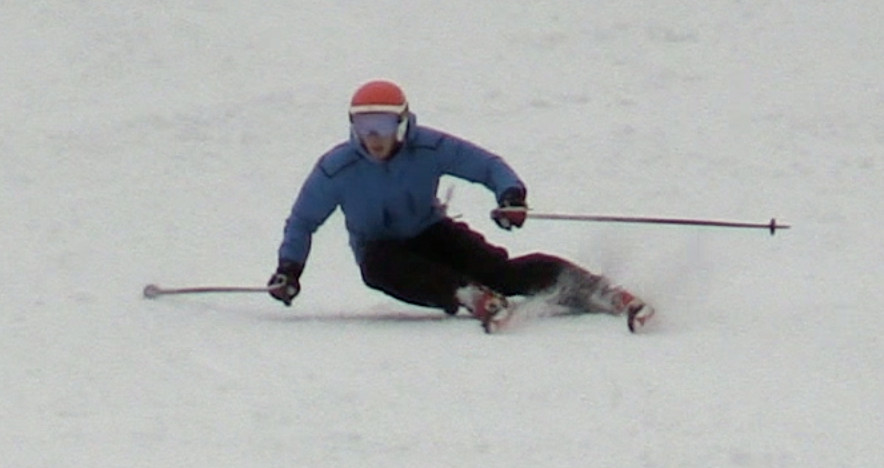Also, I have to say, I don't get this pressure vs weight debate. Since pressure is force per unit area, and force is mass x acceleration. If you lift the inside foot and the "pressure" is on the outside ski, your weight is, um, on the outside ski, since that is the only point of contact between your body and the earth.
Is this pressure vs weight distinction that came about when Harald Harb was trying to invent new terms for regular things as a way to market and differentiate his system?
HH avoids using both weight and pressure... as far as I know. He uses the terms "stance ski" vs "free ski".
If you weigh 180 lbs, that's all the "weight" you get. Pressure on a green run could be between 0 and 180lbs, as you stand on the skis or... not!
However, in a high-performance hip to snow turn, you're pulling towards 3g, which is a short-hand for the centripetal force three times the force of Gravity and results in you creating a pressure 3 times your weight or almost 600 lbs.
p.s. it's a very interesting discussion what gravity is and what a gravitational field is and contrasting that with the centripetal force, which is a very different thing entirely... The gravitational field is measured in acceleration units, for good reason, while the centripetal force is directly related to the mass of the object!
So, a big difference between standing on a flat ski and feeling "weight" and withstanding 3g pressure in a high-performance carve.
The definition for
weight: a body's relative mass or the quantity of matter contained by it, giving rise to a downward force; the heaviness of a person or thing.
"he was at least 175 pounds in weight"
The definition for
pressure: continuous physical force exerted on or against an object by something in contact with it.
Yet another thing is lightly engaging the ski at the top of the turn, where you can't talk about weight - you're not "weighting it", not really even really "pressuring it", it's more like just creating balance, since you're just feeling the edge engage - if you dig it in too early, you'll lose the ski and end up skidding. So that's neither weight nor (in my mind) pressure, it's ... just creating balance. This only works if you've flexed in transition, so you control "pressure" and if you got enough energy and impulse from the previous turn, to be able to "float" to the new apex.
If you manage to ski with a lot of offset and high-performance turns, then you'll understand exactly what I mean, as you're lightly engaging the ski as you're moving with it across the slope!
The point being that at a high-performance level, things are a lot more nuanced than just whether or not you're "weighting the ski"




